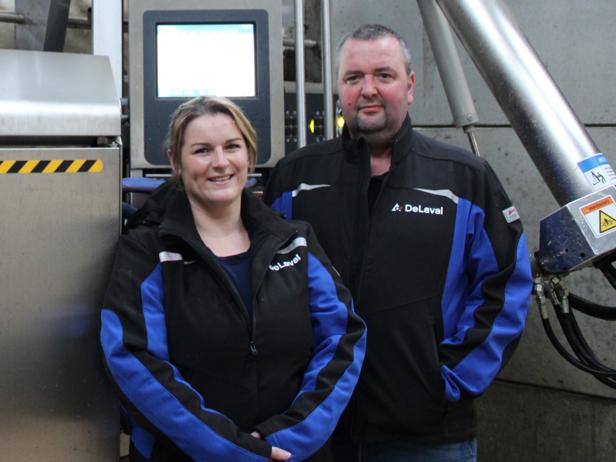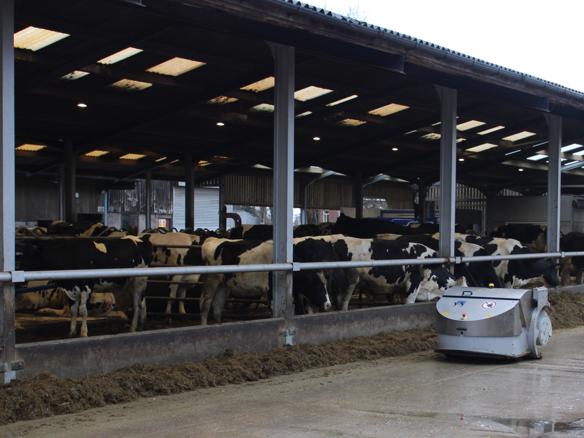Customer testimonials

Home Farm
Farm location
Crosten, UK
Herd size
110
“We have so much more time to think and plan. The robots have freed up at least six hours of our time every day, giving me time to manage the herd better,”
Paul and Elaine Smith farm in Crosten near Lancashire. After 32 years of milking the herd across two farms, the family decided the way they farm needed to change. The family made the decision that robots would be the way forward for the family.
When faced with which robots to choose they visited a number of similar farms that had already installed robots. “Some machines only had a capacity of 55 cows per robot, whereas the DeLaval VMS V310 robot can milk up to 70. This was a big factor for us because we were starting with 110 cows through two robots initially before adding more. If we had chosen another brand, we would have needed three robots and the third would have been underutilised while we built up the herd,” explains Paul.
The robots offer a better quality of life for the family and are also a useful source of information. “We have more time to manage the herd. The VMS V310 robots are fitted with DeLaval RePro, an automated progesterone testing unit, that can identify fertility problems faster and more accurately than we ever could,” says Paul. With more time available to him, Paul carries out his own AI and is using the data from the robots to make more informed decisions about cow health, nutrition, production, and fertility.

The build quality, automatically pregnancy and heat detection and the way the DeLaval robots are installed were all significant in the decision-making process. “We have a pit that we can stand in to look at how the robots and cows are performing. This makes inspecting the cows much easier because we can view the teats and feet whilst the cow is at the robot,” says Paul.
The reports, especially the fertility reports, have also been a big step forward. “Our vet has been impressed with the level of information we are able to export. During vet visits we can ask the vet to check for follicular or luteal cysts much quicker than previously, which means that the cows are getting the appropriate treatment at least 30 days earlier. This also means that the cow will be back in calf sooner which increases our profitability,” concludes Paul.
There is little doubt that the herd will grow, and two further robots will be installed. Paul and Elaine have two sons, Harry (14) and James (12), who are enthusiastic now the robots have changed the way the farm operates. “The boys are part of a new generation who use technology every day. The idea of milking in a parlour three times a day seems archaic to them, and me, now. The robots will offer them a sustainable business and hopefully they will have time to help us educate the next generation at the farm too,” he concludes.
Trevor openly discussed with DeLaval about his start-up experience and how well it went.
‘Every Teat No Problem’
“As a new entrant I had to buy my cows; I didn’t check them for teat placement before buying and I was a bit worried about attachment but the V300 found every teat no problem. There are cows you can milk with the robot but I don’t think you’d be able to milk in parlour,” Trevor said.
“When we had the start-up we expected it to be a disaster really as all these cows just arrived on the farm a few hours before, but it was fine.
“We started at around 8:50pm and by 11:30pm all the 20 cows had gone through with just a little guidance; we didn’t have to push any.
“The next morning I got up early and when I drove into the yard I could hear the robot milking away, and some cows had already been through the robot during the night,” he concluded.